Key takeaways
- Handmade paper adds warmth and character to crafts due to its unique textures and imperfections.
- Choosing the right type, texture, and thickness of paper can significantly impact the success of a project.
- Personal connection to paper influences creativity, with color and feel playing crucial roles in selection.
- Common mistakes include prioritizing aesthetics over durability and not considering how texture influences tools and techniques.
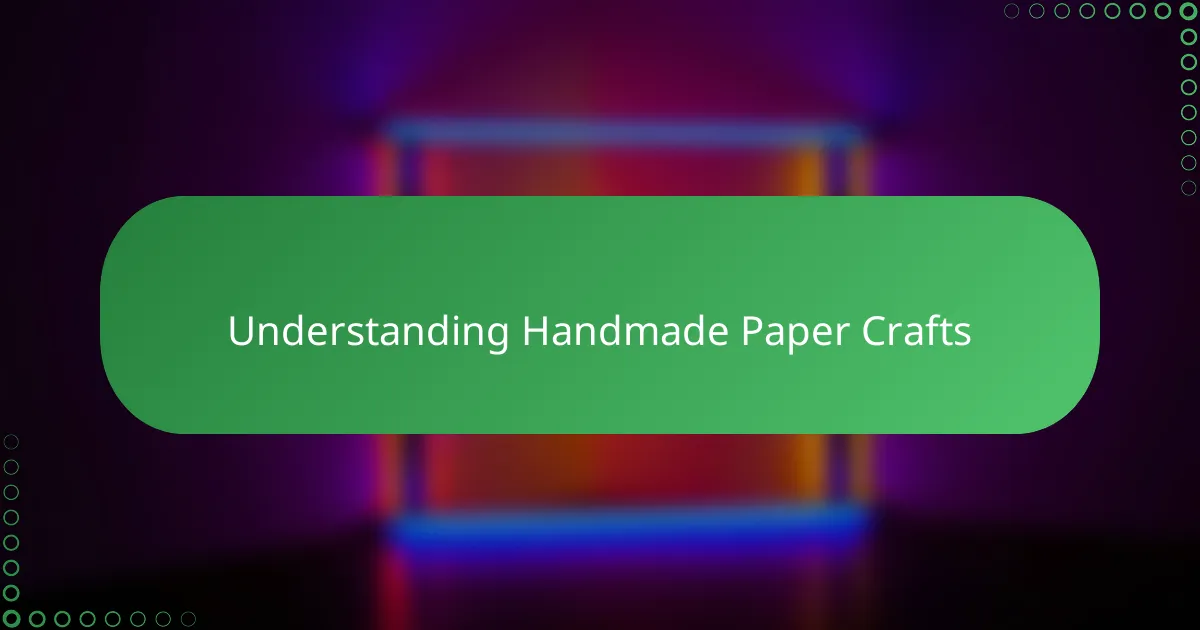
Understanding Handmade Paper Crafts
Handmade paper crafts hold a special place in my heart because they connect me to a slower, more intentional way of creating. When I work with handmade paper, I’m not just shaping material—I’m shaping memories and emotions. Have you ever noticed how the texture and imperfections in handmade paper add a warmth that machine-made paper simply can’t match?
From my experience, understanding the unique qualities of handmade paper is key to making something truly special. Each sheet feels alive, with fibers weaving a story that invites both the maker and the receiver to appreciate the craft on a deeper level. It’s these little details that make me keep coming back for more creative projects.
I often ask myself: What does this paper want to become? That question guides my choices, helping me select the right paper for each craft. Recognizing the paper’s potential sparks a sense of adventure and respect in the creative process—something I believe every handmade paper enthusiast shares.
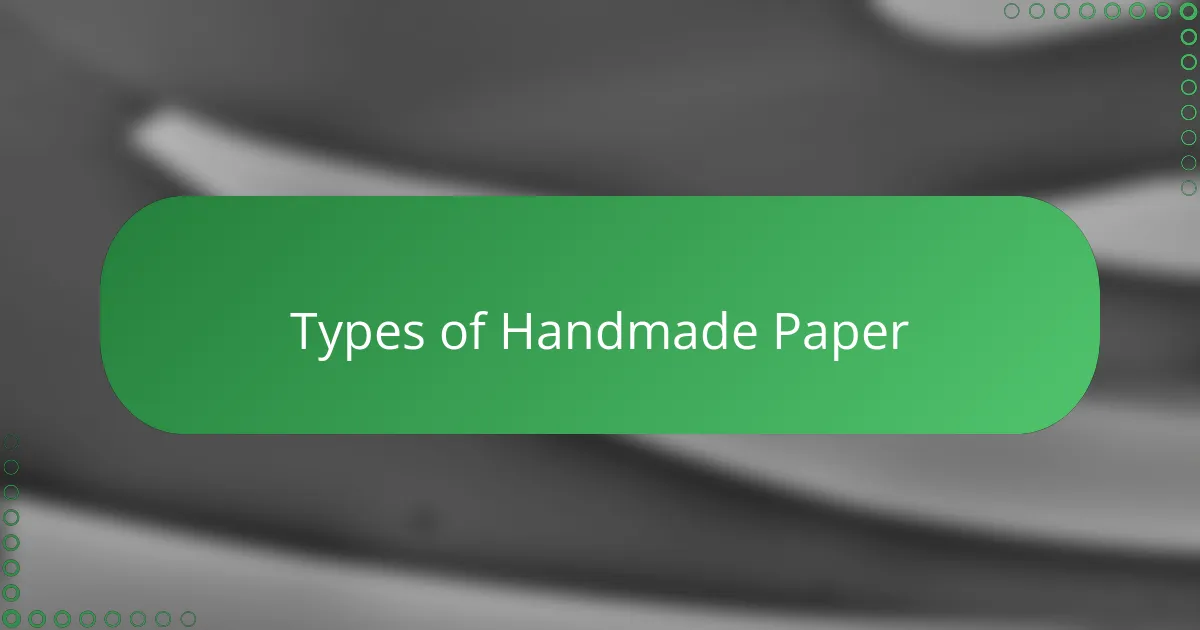
Types of Handmade Paper
Handmade paper comes in so many types, each with its own personality. There’s cotton rag paper, which feels soft and durable in my hands, perfect for watercolors or calligraphy. Then, there’s rice paper, delicate and almost translucent, making me think twice before using it—its fragility demands gentle care.
Have you ever worked with recycled handmade paper? I love it because there’s a story in every fiber—scraps from other projects transformed into something new. It’s not just eco-friendly; it’s like giving old materials a fresh breath of life. Choosing this paper feels like honoring both the past and the future in my crafts.
Texture plays a huge role too. Some handmade papers are rough and uneven, adding character but sometimes challenging my tools. Others are smoother, almost like a blank canvas inviting me to draw or write freely. Asking myself which texture fits the mood or the message often helps me settle on the right sheet.
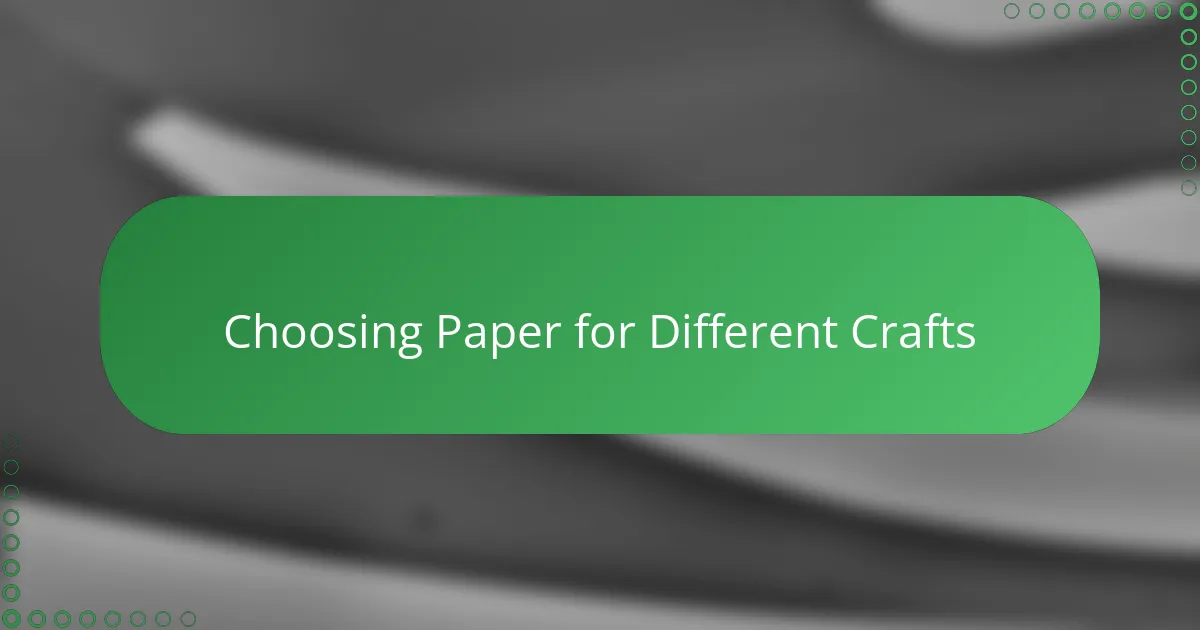
Choosing Paper for Different Crafts
When I’m deciding on paper for a particular craft, I always consider what the final piece will need. For example, thick, textured papers work beautifully for handmade cards or scrapbooking because they hold layers and glue well without warping. Have you tried folding delicate rice paper for origami? I learned quickly that too much creasing can weaken it, so I save those sheets for projects where gentle handling is key.
Sometimes, I find myself reaching for smooth cotton rag paper when I plan to add fine details like calligraphy or watercolor. Its surface lets my pen glide effortlessly, making every stroke feel intentional and precise. I’ve noticed that using the wrong paper in these cases often results in bleeding ink or uneven colors, which can be frustrating—and honestly, it ruins the joy of creating.
Choosing paper for mixed-media crafts is a different adventure. I like to experiment by combining papers of various weights and textures to build depth and interest. One time, layering a translucent sheet over rough handmade paper gave my piece an unexpected glow—something I wouldn’t have discovered if I’d stuck to just one type. That’s the magic of matching paper to craft: it’s not just about function but about inviting surprises into your work.
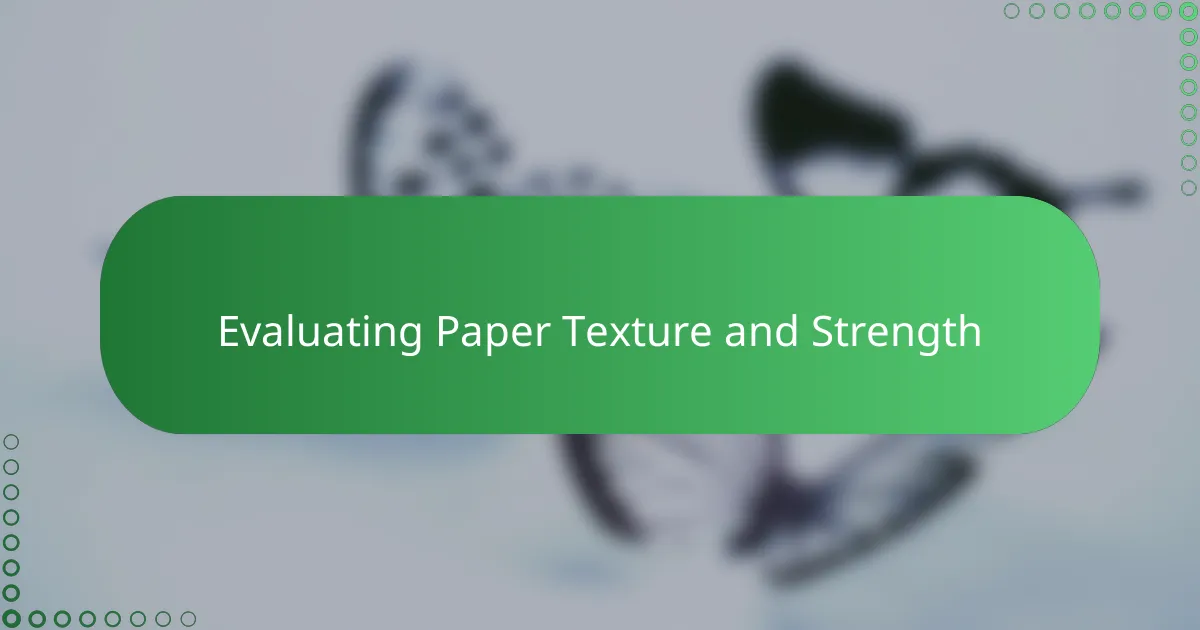
Evaluating Paper Texture and Strength
The feel of paper beneath my fingertips often tells me more than any label ever could. When I run my hand over a sheet, I’m searching for texture—does it have that gentle toothiness that will catch paint or ink, or is it so smooth that colors might just slide away? Sometimes, I’m drawn to rougher papers because their uneven surfaces add a tactile story, but I always wonder: will they hold up under my tools or buckle under pressure?
Strength is another silent conversation I have with each paper. I remember a time when I chose a delicate sheet for a layered collage, only to watch it tear as I glued each piece down. That mistake taught me to test the paper’s durability, sometimes even bending or lifting a corner to see if it can endure my vision. It’s surprising how much confidence comes from knowing your paper won’t give out halfway through your project.
Have you ever thought about how much the paper’s texture and strength affect not just the look, but the feel of your finished work? For me, it’s like choosing the right partner: the paper needs to support my creativity, withstand my process, and still reveal its own character. When these elements align, the result isn’t just a craft—it’s a handcrafted experience worth cherishing.
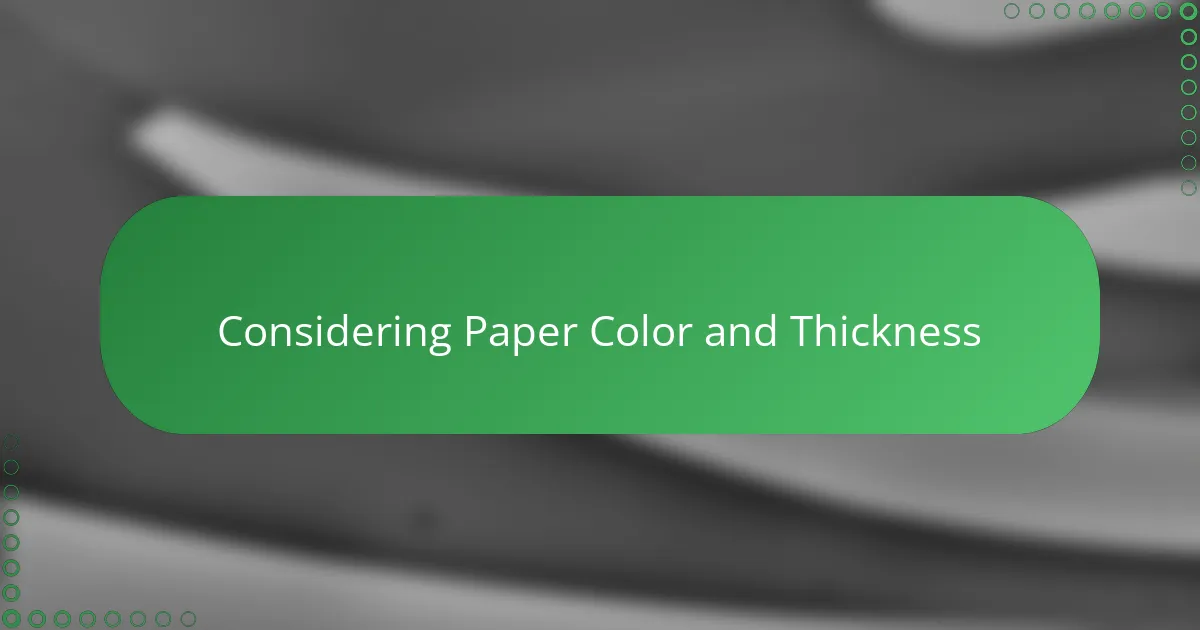
Considering Paper Color and Thickness
Color choice in handmade paper often feels more personal to me than purely practical. Sometimes I lean toward soft neutrals to let my artwork breathe, but other times a bold hue sets the whole mood of the piece before I even start. Have you noticed how just a subtle tint can change the entire emotion your craft conveys?
Thickness is a game-changer in my experience. Thicker paper can feel like a sturdy foundation, perfect when I want my project to last or hold shape—like when I’m making cards meant to be saved. On the other hand, thinner sheets invite delicacy and finesse but demand a gentler touch. I’ve learned the hard way that pushing thin paper too far leads to tears and frustration, so handling it with care becomes part of the process.
Sometimes, I ask myself: Will this paper’s color and weight complement each other or clash? Balancing these two feels like striking a creative harmony. I remember layering a translucent pale paper over a heavier, warm-toned base once—it transformed a simple piece into something mysteriously luminous. That moment convinced me color and thickness aren’t separate choices but a dialog within the craft itself.

Personal Tips for Selecting Paper
When I’m selecting paper, I always trust my hands first. Running my fingers over the surface helps me sense the texture and strength—sometimes a sheet looks perfect until I feel its fragility. Have you ever picked up a paper that seemed promising but crumbled when you started working? That little test has saved me from a lot of ruined projects.
I tend to think about how the paper will interact with my tools, especially glue and pens. One time, I chose a beautiful, thin sheet for a layered card, only to have it warp as the glue dried. Since then, I’ve learned to balance beauty with practicality—thicker papers often mean less stress and more confidence during crafting.
Color and feel also play a huge role in my choices. There are days when a soft cream paper soothes my mood, while bright, bold colors energize me for lively designs. I ask myself, does this paper inspire the story I want to tell? That question helps me select not just the right material, but the right mood for the project.

Common Mistakes to Avoid in Paper Choice
One common mistake I’ve made—and I’m sure many crafters have too—is choosing paper solely because it looks beautiful, without testing its durability. I remember once starting a delicate collage on a stunningly thin sheet, only to have it buckle and tear as I added layers. That taught me the hard lesson: beauty alone can’t carry a craft; strength matters just as much.
Another pitfall is overlooking how texture affects the tools I use. Have you ever struggled with ink bleeding or paint pooling on unexpected spots? I certainly have, when I picked a paper that was too rough or too smooth for my medium. Matching paper texture to your technique isn’t just helpful—it can make or break the final piece.
Finally, I find that ignoring thickness can lead to frustration down the line. Thin papers warp under glue; thick papers might not fold neatly. I once tried folding thick handmade paper for origami, and let’s just say, it wasn’t pretty. So, asking “Will this paper hold up to my process?” before committing saves time, patience, and creative spirit.
